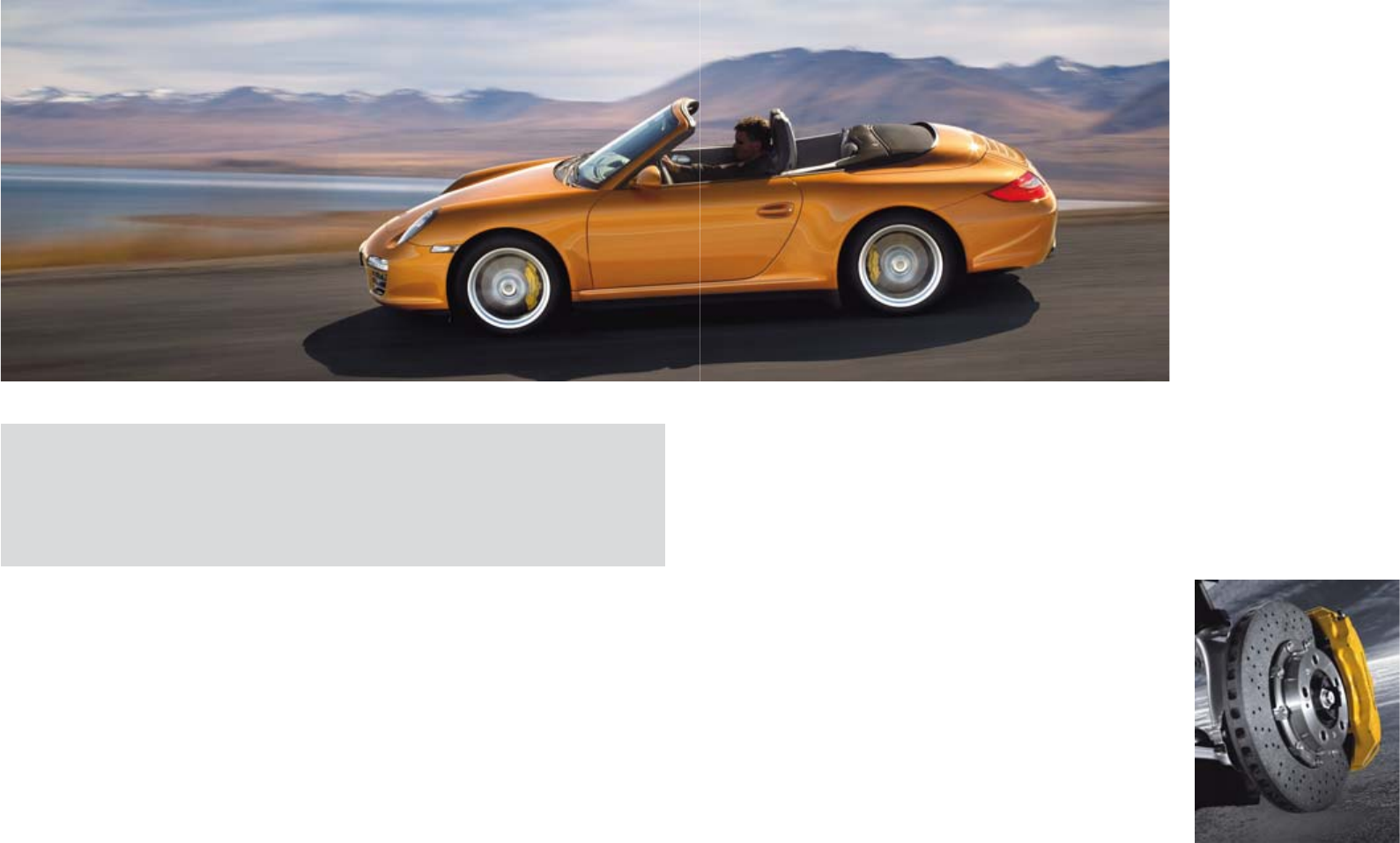
·88·
On request, we can provide you
with a brake system that has
already had to cope with the
harshest requirements of motor
racing – a brake system fitted
in the cars competing in the
Porsche Mobil 1 Supercup: the
Porsche Ceramic Composite
Brake (PCCB).
The PCCB ceramic brake discs
for the new 911 have a diameter
of 350 mm front and rear – for
formidable braking performance.
The brake discs are formed
from a specially treated carbon-
fibre compound that is silicated
in a high-vacuum process at approxi-
mately 1,700 °C. Not only are
the resulting braking discs much
harder than standard discs, they
are more resistant to heat.
PCCB is characterised by its low
thermal expansion, which prevents
deformation under
heavy braking.
Furthermore, the ceramic brake
Day-to-day practicality.
Straight from the racetrack.
Porsche Ceramic Composite Brake (PCCB).
·89·
The new 911 | Safety
Porsche Ceramic Composite Brake (PCCB)
911 Carrera 4 Cabriolet
discs are totally resistant to cor-
rosion and offer more favourable
noise-damping properties.
The use of six-piston aluminium
monobloc brake calipers on the
front axle and four-piston units
at the rear ensures extremely
high brake forces which, crucially,
are exceptionally consistant.
The pedal response is fast and
precise with only moderate input
required.
All the necessary ingredients are
there for a short braking distance,
even in the toughest conditions.
Moreover, safety under braking at
high speeds is increased thanks
to the excellent fade resistance of
the PCCB.
The key advantage of PCCB is the
extremely low weight of the brake
disc, which is approximately 50%
lighter than standard discs of
similar design and size. As well as
enhancing performance and fuel
economy, this represents a major
reduction in unsprung and rotating
masses. The consequence of
this is better road holding and
increased comfort, particularly on
uneven roads, as well as greater
agility and improved handling.
Please note that circuit racing,
trackday use and other forms
of performance driving can
significantly reduce the service
life of even the most durable
brake pads and discs. As with
conventional high-performance
braking systems, we recommend
t
hat all brake components be
professionally inspected and
replaced where necessary after
every track event.


















